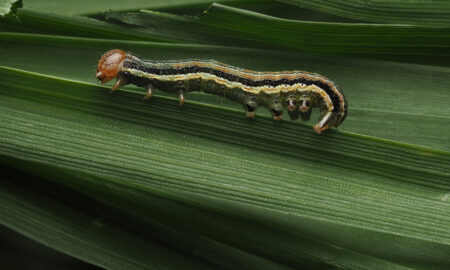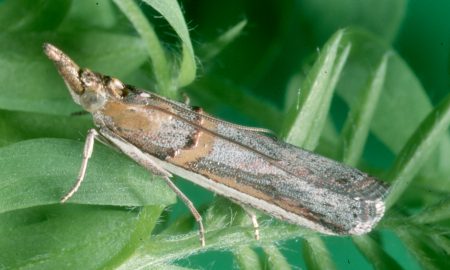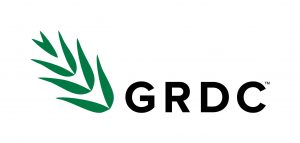Key takeaway: Green peach aphid is a highly efficient vector of turnip yellows virus. While there has not been a major outbreak reported this season, warm autumn conditions may prolong aphid activity. Watch for symptoms in young canola and only spray if necessary, as resistance to multiple insecticides is widespread. Virus and resistance testing services are available.
When finding green peach aphid (Myzus persicae) in establishing canola, the concern is usually not the direct feeding damage, but rather the risk of turnip yellows virus (TuYV) transmission, the most economically damaging virus of canola.
The green peach aphid is the primary vector of TuYV, with an exceptionally high transmission efficiency of 96 percent.
Symptoms to look out for include red, yellow, or purple discolouration, particularly on the edges of older leaves. These colours are typically more intense between leaf veins and on the upper side of the leaf.
Current conditions don’t necessarily point to a high-risk year for virus; for example, much of southeastern Australia experienced a drier-than-average summer, and there haven’t been widespread reports to our service like those during the 2024 outbreak in New South Wales.
However, it is still important to be aware that the warmer-than-average autumn may have prolonged aphid activity and green peach aphid is present in some canola crops.
Green peach aphid management requires a delicate balance. There are no economic thresholds for virus control, and it takes relatively few aphids to transmit the virus. But it’s crucial to only spray if warranted; the green peach aphid has already evolved resistance to multiple insecticide mode-of-action groups (see learn more below).
If you suspect TuYV in young canola paddocks, please contact your relevant state department of agriculture to have samples tested for virus:
New South Wales –
Joop van Leur, NSW DPI
joop.vanleur@dpi.nsw.gov.au
Victoria –
Mohammad Aftab, Agriculture Victoria
mohammad.aftab@agriculture.vic.gov.au
Before spraying, join the growing number of growers and advisors who check the Beneficials Chemical Toxicity Table to protect the insects that help control pests.
If you experience a control failure, you can also access our current insecticide resistance testing service for green peach aphid.
Learn more
For more comprehensive information on green peach aphid management, including insecticide resistance considerations, refer to the Green peach aphid: Best management practice guide (GRDC).
Acknowledgments
Thanks to James Falvey and Matt Nihill (Nutrien Ag Solutions) for providing field reports.
Cover image: Green peach aphid on Canola leaf with virus, photo by Lilia Jenkins





